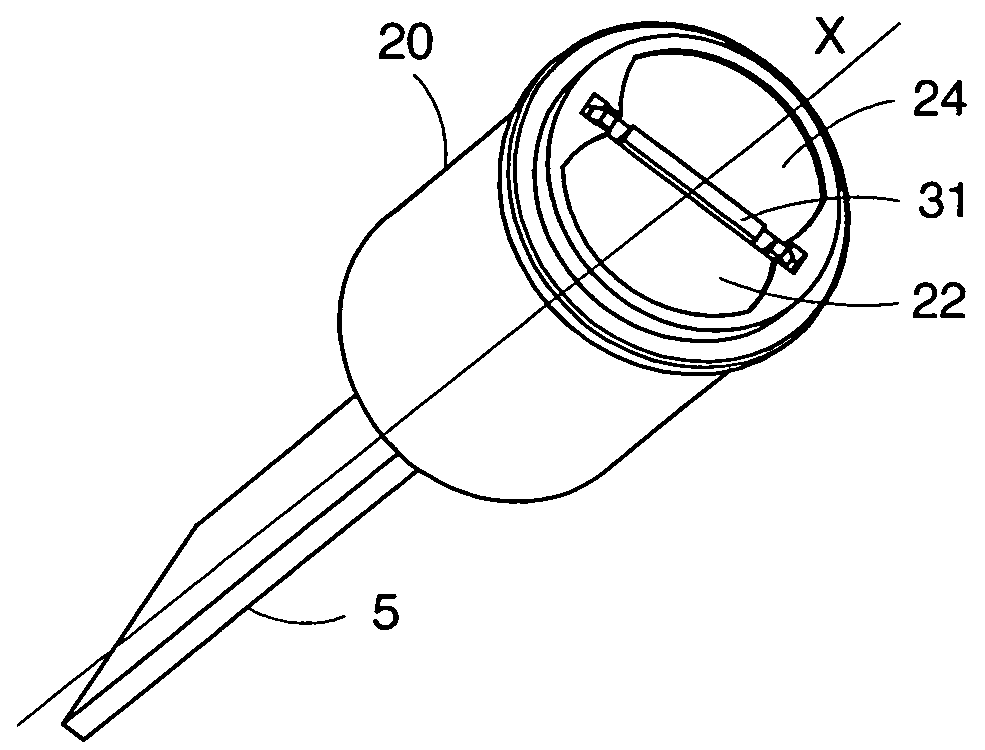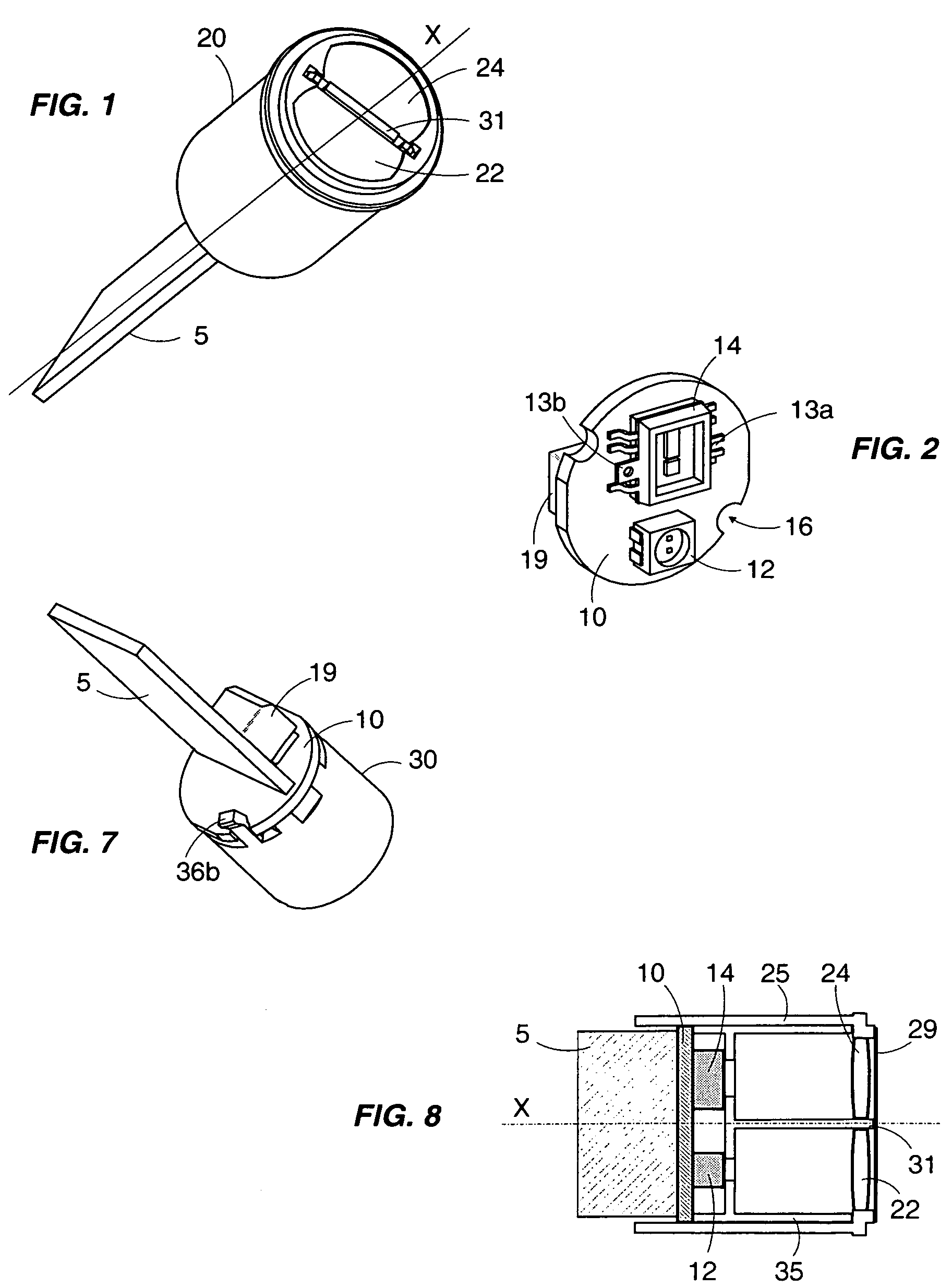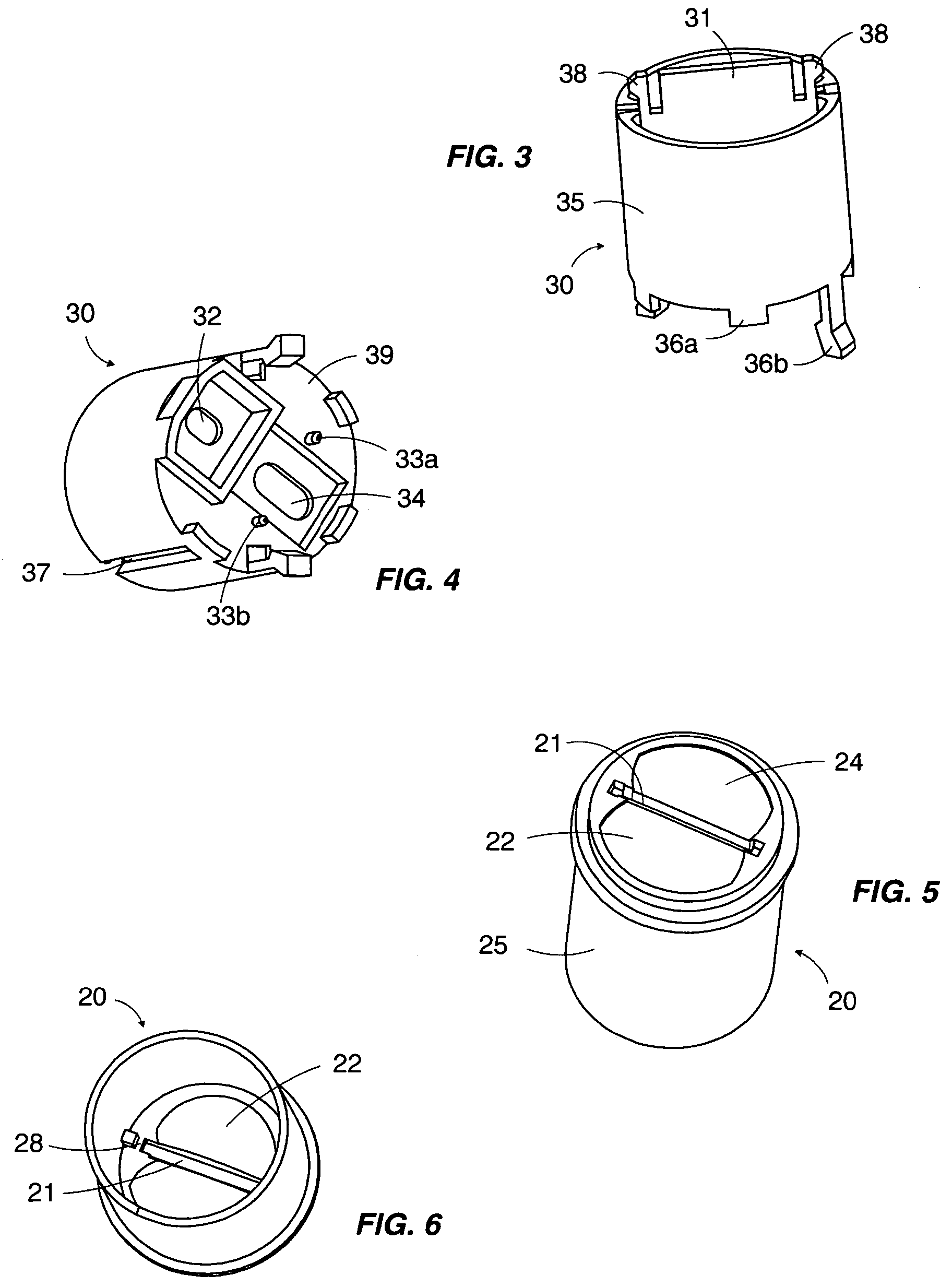Photoelectric detector
a detector and photoelectric technology, applied in the field of photoelectric detectors, can solve the problems of affecting the reliability of the output information of the detector, the risk of lenses also increasing the risk of crosstalk, so as to achieve the effect of simple and inexpensive photoelectric detectors, effective and reliable, and easy reproducibility
- Summary
- Abstract
- Description
- Claims
- Application Information
AI Technical Summary
Benefits of technology
Problems solved by technology
Method used
Image
Examples
Embodiment Construction
[0018]As shown in FIG. 8, a photoelectric detector, also called a photoelectric cell, includes an emit member 12 capable of emitting at least a first light signal in a direction approximately parallel to the longitudinal axis X of the detector, and a receive member 14 capable of receiving at least a second light signal. The received second light signal originates from the reflection of the emitted first light signal off a reflector or off a target (not shown) to be detected, depending on the use of the detector. The receive member 14 is provided with at least one photoreceptive component that can deliver an electrical signal representative of the second light signal.
[0019]The detector can operate either in a reflex detector mode or in a proximity detector mode. It can also operate in both of these modes. To do so, the emit member 12 may include a photoemissive component capable of emitting a light signal whose wavelength lies within the red spectrum, and a photoemissive component ca...
PUM
 Login to View More
Login to View More Abstract
Description
Claims
Application Information
 Login to View More
Login to View More - R&D
- Intellectual Property
- Life Sciences
- Materials
- Tech Scout
- Unparalleled Data Quality
- Higher Quality Content
- 60% Fewer Hallucinations
Browse by: Latest US Patents, China's latest patents, Technical Efficacy Thesaurus, Application Domain, Technology Topic, Popular Technical Reports.
© 2025 PatSnap. All rights reserved.Legal|Privacy policy|Modern Slavery Act Transparency Statement|Sitemap|About US| Contact US: help@patsnap.com



